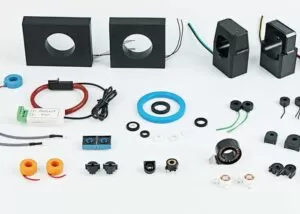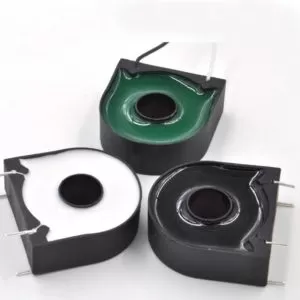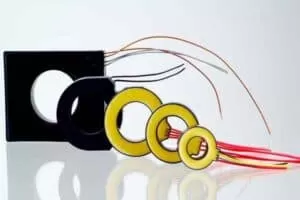Zero current transformer is a leakage current detection component of line fault. It has only one iron core and secondary winding. When it works, the primary three-core cable is passed through the iron core window of the transformer, and the secondary one is connected to the relay with lead wire, and then the output terminal of the relay is connected to the signal device or alarm system.
Under normal circumstances, the three-phase currents in the primary circuit are basically balanced, and the resulting combined magnetic flux is also close to zero. No current is induced in the secondary winding of the transformer. When the single-phase grounding fault occurs in the primary circuit,it generates an unbalanced current (meaning zero-sequence current)in the primary circuit, while a tiny current is induced in the secondary winding to trigger operation of the relay and send a signal. The current that activates the relay is very small (mA level), which is called the sensitivity of the zero current transformer or the secondary current (it can also be expressed as a small action current), which is the main action index.
The current transformer located inside the switch in the gear of 10kV feeder is generally divided into two-phase or three-phase depending on the wiring method. The current transformer consists of primary winding (L1, L2), secondary winding, iron cores, cast with silicone rubber.The following will analyze their difference.
Common features of zero current transformers and current transformers:
Both zero current transformers and current sensor work according to the principle of electromagnetic induction, but in different working states.
Current transformer:
The primary coil of an ordinary current transformer only passes through one phase conductor of the measured line, the current in the primary coil is the load current of such phase, and the secondary current is the corresponding ratio of the primary current.
Zero phase current transformer:
The primary coil of the zero current transformer passes through the three-phase conductor of the measured circuit. Under normal conditions, since the vector sum of the three-phase currents is zero, no magnetic flux will be generated in the iron core, so there will be no induced current in the secondary coil.
When a single-phase ground fault occurs in the protected circuit, the vector sum of the three-phase currents is no longer zero. At this time, an induced magnetic flux will be generated in the iron core of the transformer, and there will be an induced current in the secondary coil, thereby starting the relay to make The protective device operates.






